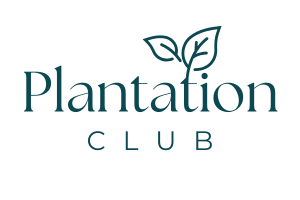What Is the Miyawaki Method?
Developed by Japanese botanist Dr. Akira Miyawaki, this method focuses on growing native forests in compact, dense clusters using carefully selected local species. The idea is simple: nature knows best.
Plantation Club
5/16/20252 min read


And Why We're Using It to Restore Land at The Plantation Club
At The Plantation Club, we’re not just growing plants — we’re restoring ecosystems. That’s why we’ve chosen to follow the Miyawaki afforestation method, a globally respected approach to growing fast, dense, and diverse native forests — even on degraded land.
You’ll see this method in action through our Linen to Leaves initiative — a collaboration with OrganoLinen where every customer order helps us plant a real, native species right here in India.
If you’ve never heard of Miyawaki, you’re not alone. But we believe it's the future of small-scale ecological restoration — and here’s why.
🌱 What is the Miyawaki Method?
Developed by Japanese botanist Dr. Akira Miyawaki, this method focuses on growing native forests in compact, dense clusters using carefully selected local species. The idea is simple: nature knows best.
Unlike traditional reforestation that often relies on single-species plantations, the Miyawaki approach:
🌿 Mimics natural forest layers (canopy, sub-canopy, shrubs, etc.)
🕰️ Grows 10x faster than conventional methods
🐝 Increases biodiversity and soil regeneration
🌧️ Improves groundwater retention and microclimate
💪 Builds resilience to climate extremes
In just 20–30 years, Miyawaki forests can reach the maturity and density of a 100-year-old natural forest.
🌍 Why We Use It at The Plantation Club
Our plantation land has rich potential — but it also faces soil fatigue, mono-cropping history, and exposure to climate stress.
By applying the Miyawaki method, we’re:
Choosing 100% native species — no imports, no guesswork
Creating microforests between and alongside traditional crop zones
Using multi-layer planting techniques for long-term resilience
Providing habitat for birds, insects, and beneficial fungi
These forests not only heal the land but become a living classroom for sustainable agriculture and biodiversity in action.
🤝 How This Ties Into Linen to Leaves
When OrganoLinen approached us to partner on a tree-planting initiative linked to their made-to-order fashion brand, we knew it had to be more than just planting trees for the sake of offsetting.
Together, we designed Linen to Leaves — where every OrganoLinen order plants a real, native plant using this method. We're starting with tea and coffee, but expanding soon into other indigenous species suited to the region.
Customers who order from OrganoLinen receive planting updates, photos, and even the option to see what plant was grown for their order.
It’s transparency, rooted in soil.
📸 Watch the Forests Grow
Our first plantings are already underway — and we’re documenting them every step of the way. You’ll find updates on our blog, Instagram, and OrganoLinen’s channels as we track progress season after season.
We believe the Miyawaki method is more than a planting technique — it’s a philosophy of coexistence, care, and local wisdom. And we’re proud to make it part of the land we steward.
Want to be part of it?
Every OrganoLinen order helps bring one more plant to life in a future forest.
Explore more about the initiative at: organolinen.com/pages/linen-to-leaves
